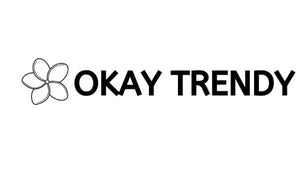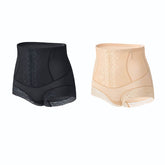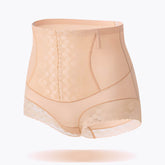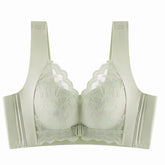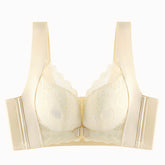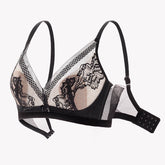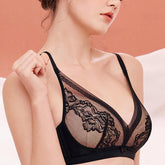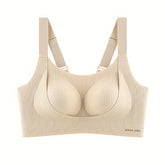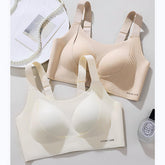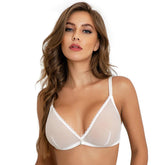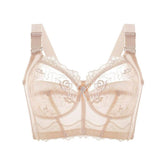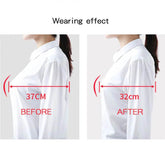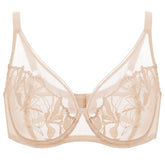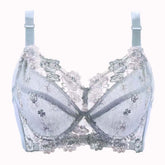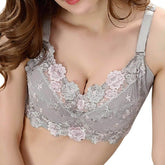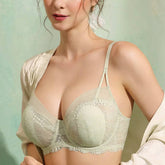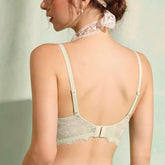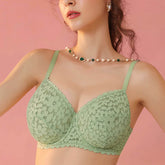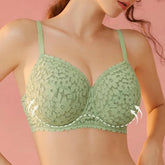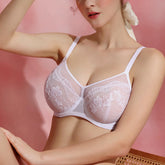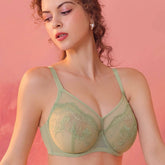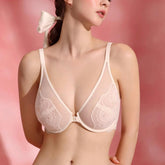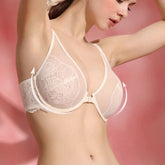BODY POSITIVITY VS. BODY NEUTRALITY: The Path to Greater Well-Being

The Body Positivity movement aimed to combat unrealistic ideals in social media - the same images of tall, fit, slender women over and over again. It presented Body Positivity as an antidote to the relentless doctrine of these perfect body standards, in simple terms, a "Positive Attitude towards the Body" regardless of unrealistic role models. Cheers to embracing diversity and individual beauty. Sounds good, right? Today, I'd say: Yes, BUT...
First, let's start with some facts about the origins of Body Positivity. It's a fact that one's appearance plays a role in social contexts like dating, school, or work. Also in advertising. Especially overweight individuals - both men and women - are more frequently discriminated against compared to slimmer ones. They may earn less with the same qualifications and experience unequal treatment in healthcare. Plus-size fashion still remains a niche. That's why the Body Positivity movement emerged from the so-called Fat Acceptance movement in the USA in 1969, advocating for dignity, respect, and fair treatment. Body Positivity gained momentum in social media around 2012 with the hashtag #bodypositivity. It has now become a global phenomenon and an Instagram trend - the hashtag is so widely used that it's worth questioning how much substance remains in it. #BODYPOSITIVITY - AT ANY COST?
Over the years, the BOPO movement has evolved, broadening its focus to confront unrealistic beauty ideals in general. This includes topics like extra weight, stretch marks, skin imperfections, thin hair, asymmetrical facial features, larger noses, or thin lips - basically anything that might be perceived as a deviation from the ideal image. This is a good thing in itself and aligns with the message of "You are beautiful" or "All bodies are beautiful." Entire industries profit from our desire to hide or eliminate our "imperfections." Perfect body images are ubiquitous, and Instagram is flooded with so-called "thinspiration" posts. Challenging this is a step in the right direction. It's undeniable that the Body Positivity wave has brought about some positive changes. Think about the Dove campaign from a few years ago, which featured plus-sized models on billboards for the first time. Yes, it's true - we have undoubtedly taken several steps towards more diversity. Even though the dominance of beauty ideals persists, there's at least more room for diversity. And if the hashtag #bodypositivity boosts women's self-confidence, that's great. However, the underlying mantra of "You just need to love your body" presents its challenges. Moreover, it falls short and even exacerbates the problem it aims to solve. This is where the criticism of the Body Positivity concept comes into play.
Body Positivity can help reduce negative thoughts. But the danger is that people hide their true feelings. This "Good vibes only" mantra can lead to additional mental and physical challenges.
THE PRESSURE TO BE POSITIVE Celebrate your positive body image - that's the recurring mantra of Body Positivity. Let me say it boldly: We opposed the dogma of beauty ideals and the high value placed on beauty in general with Body Positivity. But inadvertently, we've locked ourselves back into a cage: the perpetual compulsion to be positive. Now, we're under pressure once again. Because the constant comparison persists. The body remains a standard. We keep measuring ourselves, comparing ourselves to the ideals, and then saying, "I love my body just the way it is."
The demand to conform to a standardized appearance may be gone, but the requirement to love the perceived flaws remains. True freedom arises when the body is no longer the means to define one's worth. When we realistically and genuinely view ourselves, recognizing that we are not our appearance. This is also the increasingly vocal criticism of the BOPO movement, alongside the emptiness resulting from the overuse of the hashtag. Undoubtedly, personal attractiveness and body image continue to be the focus. Feminist psychological tradition refers to this as "self-objectification" - the external, judgmental gaze that women take upon themselves when assessing and evaluating their own bodies. Body Positivity also places physical appearance at the forefront, coupled with the obligation to love oneself. Particularly concerning serious health risks like obesity, this can lead to downplaying the issue on the one hand. On the other hand, the demand for self-love creates pressure and sets another unhealthy standard. Do we truly need to define ourselves by our bodies, unconditionally celebrate them, and make them the core of our self-worth?
In summary: Body Neutrality vs. Body Positivity
The difference between these two movements lies in the concept of value: The Body Neutrality approach assumes that it doesn't matter whether you find your body beautiful or not. A person's value is not determined by their body, and their happiness is not based on their appearance. Body Positivity states that you are beautiful, no matter how you look.
ACCEPTING YOURSELF - BODY NEUTRALITY Even though the BOPO movement has good intentions, it perpetuates self-assessment based on appearance. It's time to take a step further. This is what the Body Neutrality movement, introduced by Melissa Fabello in a blog post in 2015, attempts to do: One's existence should no longer be reduced to their body's perception. In a nutshell: You are who you are - not how you look. We are complex human beings with numerous dimensions. Moreover, a significant part of our physical characteristics is beyond our control, largely determined by genetics. The idea is to accept yourself confidently and holistically, living in a way that makes you comfortable in your own skin. It's not about whether you like your body or not; it's more about the fact that your worth is entirely independent of it. While Body Positivity is inherently based on a positive body image (regardless of the prevailing ideal), Body Neutrality removes the body from the evaluation entirely. It remains unjudged. It deliberately avoids comparisons and defines self-worth independently of appearance. So, you don't have to force yourself to view your appearance positively; it's okay to like some things about yourself more than others. Body Neutrality grants us the freedom to adopt a realistic and non-unconditional perspective and not feel compelled to love our bodies without conditions. After all, it's not relevant because the figure is no longer the yardstick for self-worth. It saves us from the scrutinizing gaze others often cast upon us. In short: The body isn't evaluated - it's allowed to just be. Your essence is no longer reduced to physical attributes. But it's not that simple either. People tend to compare themselves. The weaker one's self-esteem, the more they do. So, if someone is already insecure, psychology tells us they often look at those they perceive as more attractive or better, resulting in feeling even more inferior. Becoming aware of this and understanding that your own perspective is often harsher is a significant step in the right direction.
A reasonably relaxed relationship with oneself is the key to satisfaction, happiness, and a life full of positive moments, regardless of how we look. After all, who wants to be reduced to their appearance? I often feel that way in many situations. The authentic aura of a confident person is attractive - entirely independent of their physical appearance. The latter loses its impact after the first few sentences, especially when we begin to engage in conversations and truly perceive the person. Because each of us is so much more than an external shell, communication operates on so many different levels, and a person who radiates from the inside is attractive.
Internalized Body Neutrality means waking up in the morning and asking, "How do I feel today? What do I need to feel good?" It means engaging in physical activity purely for the joy of movement rather than with the goal of optimizing appearance.
Body Neutrality involves being mindful: I accept my body as it is and am grateful for everything it does for me. The body is important, but it's not the center of my existence. A little more "just be!" A little more life.
Okay, #bodypositivity was a good start, but the concept has its weaknesses. We need to take the next step. Maybe the widely used hashtag has outlived its usefulness because it couldn't solve a crucial problem: the focus is still on our bodies, not our character. This is where the Body Neutrality movement offers a smarter choice. Even though this new perspective is not as popular yet, it can lead to a more liberated everyday life. Feeling comfortable and respecting our bodies is more valuable than an obsession with appearance that culminates in unnatural self-love. We can find our bodies unattractive or attractive, view them realistically, but they don't define us. Because we are so much more than just a shell. We are beautiful because we are the individuals we are, with everything that comes with it. We are attractive because we have intelligent, funny, or quirky thoughts, because we speak loudly, because we enjoy dancing, laughing, and even sometimes crying, and because we know our strengths and weaknesses. Above all, because we accept ourselves and care for our health. This realization is undoubtedly positive, right?
The initiative for greater acceptance of our bodies is not new. It started with the Body Positivity movement, which is evolving into the Body Neutrality movement. Which approach resonates more with you?
